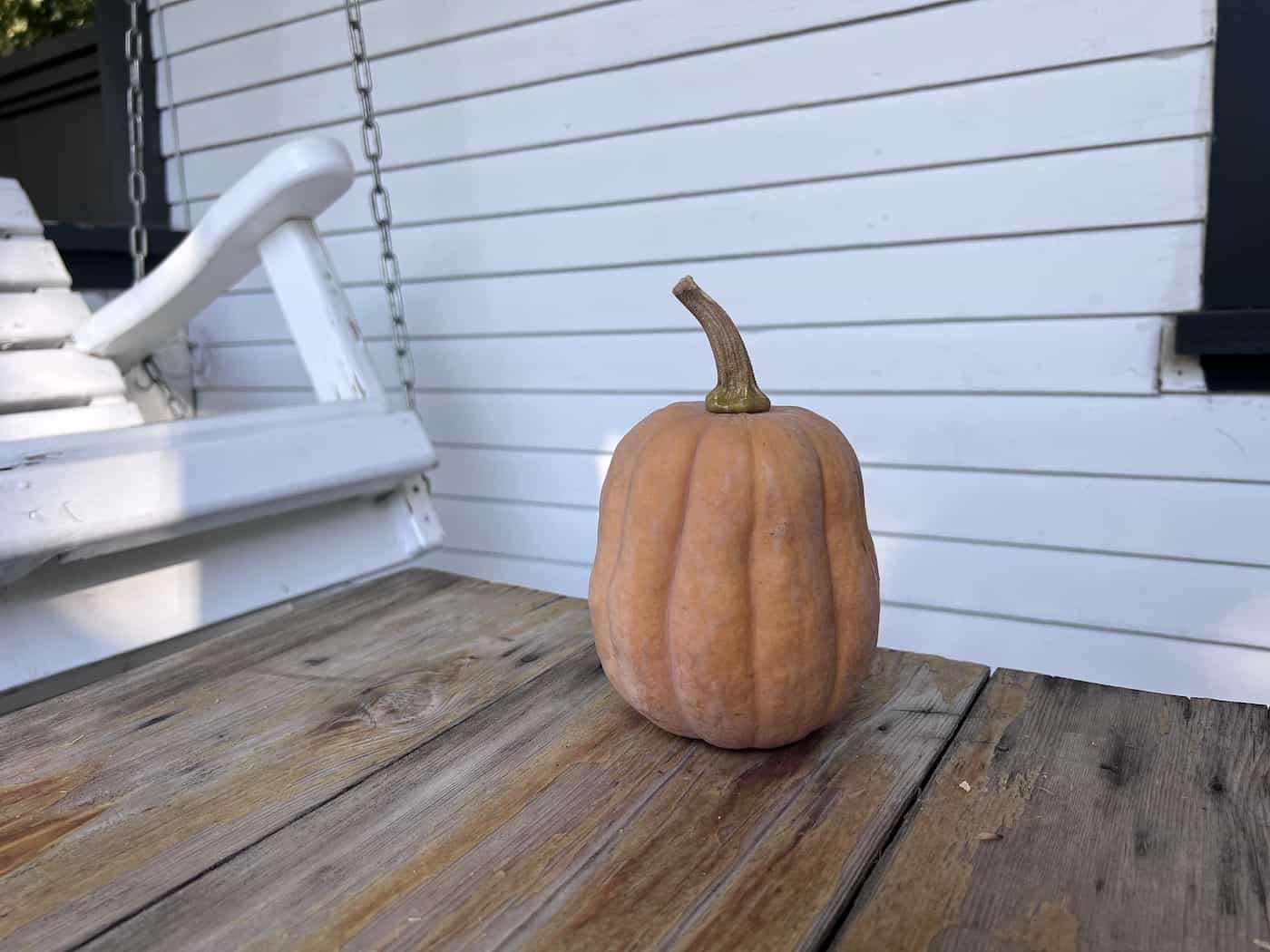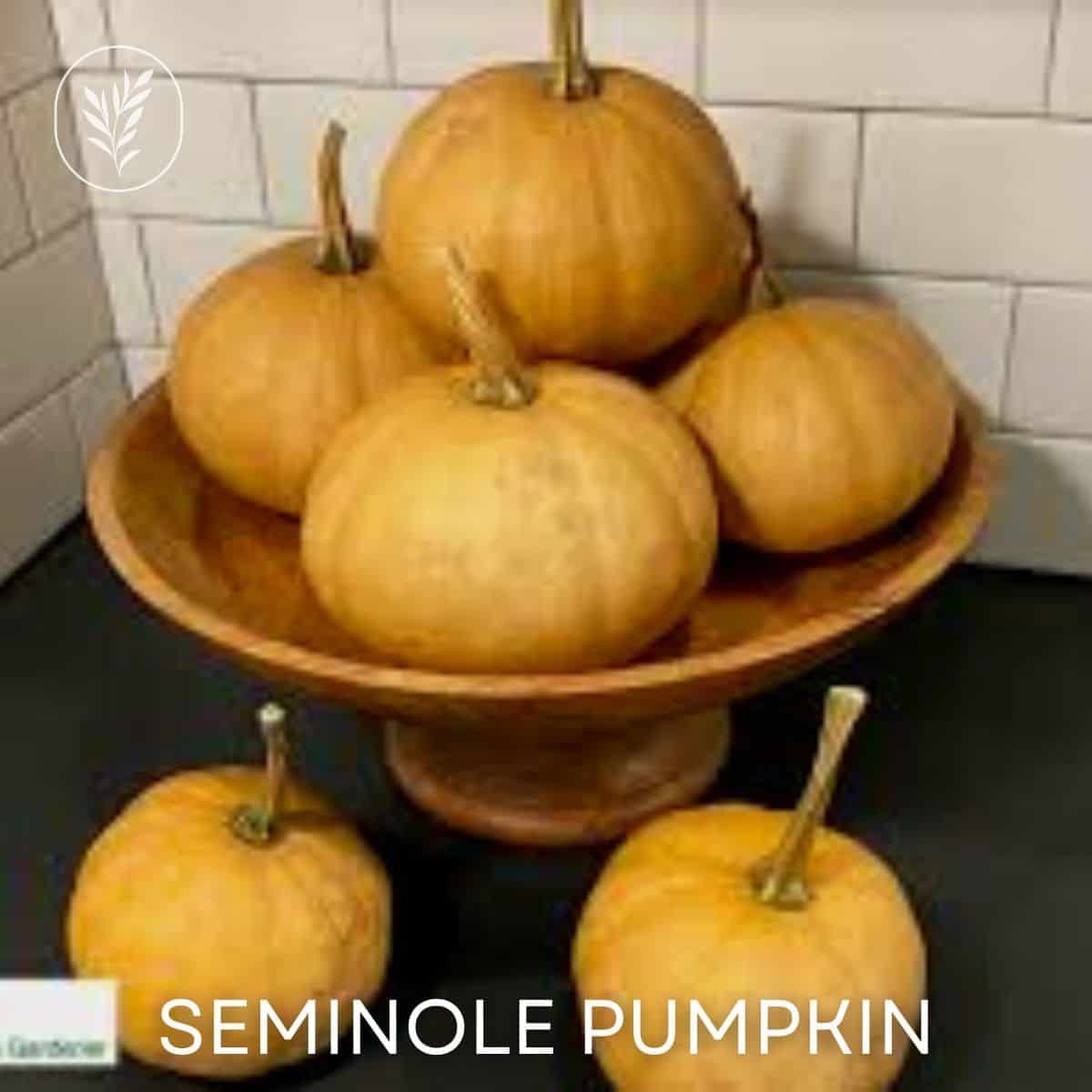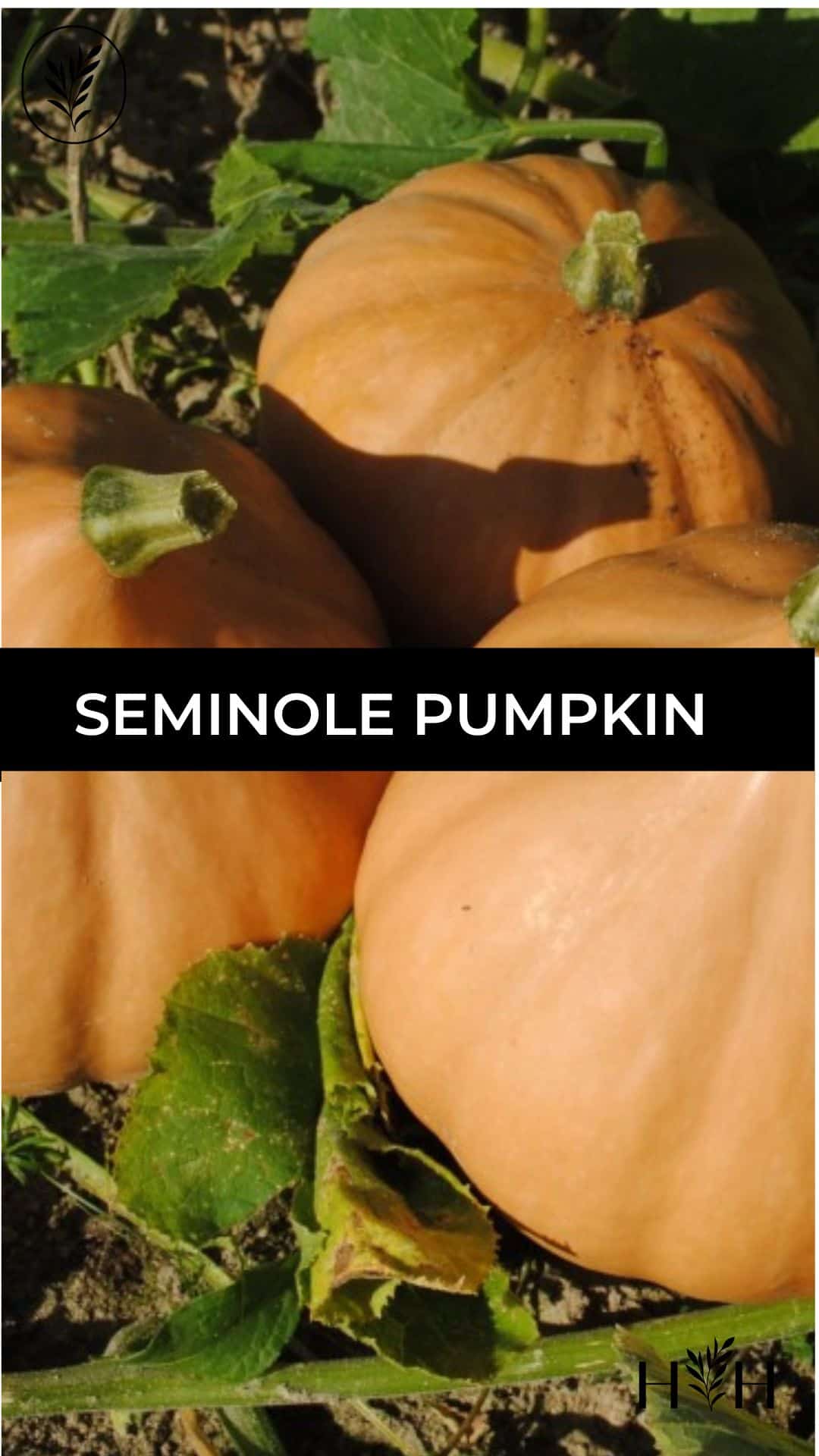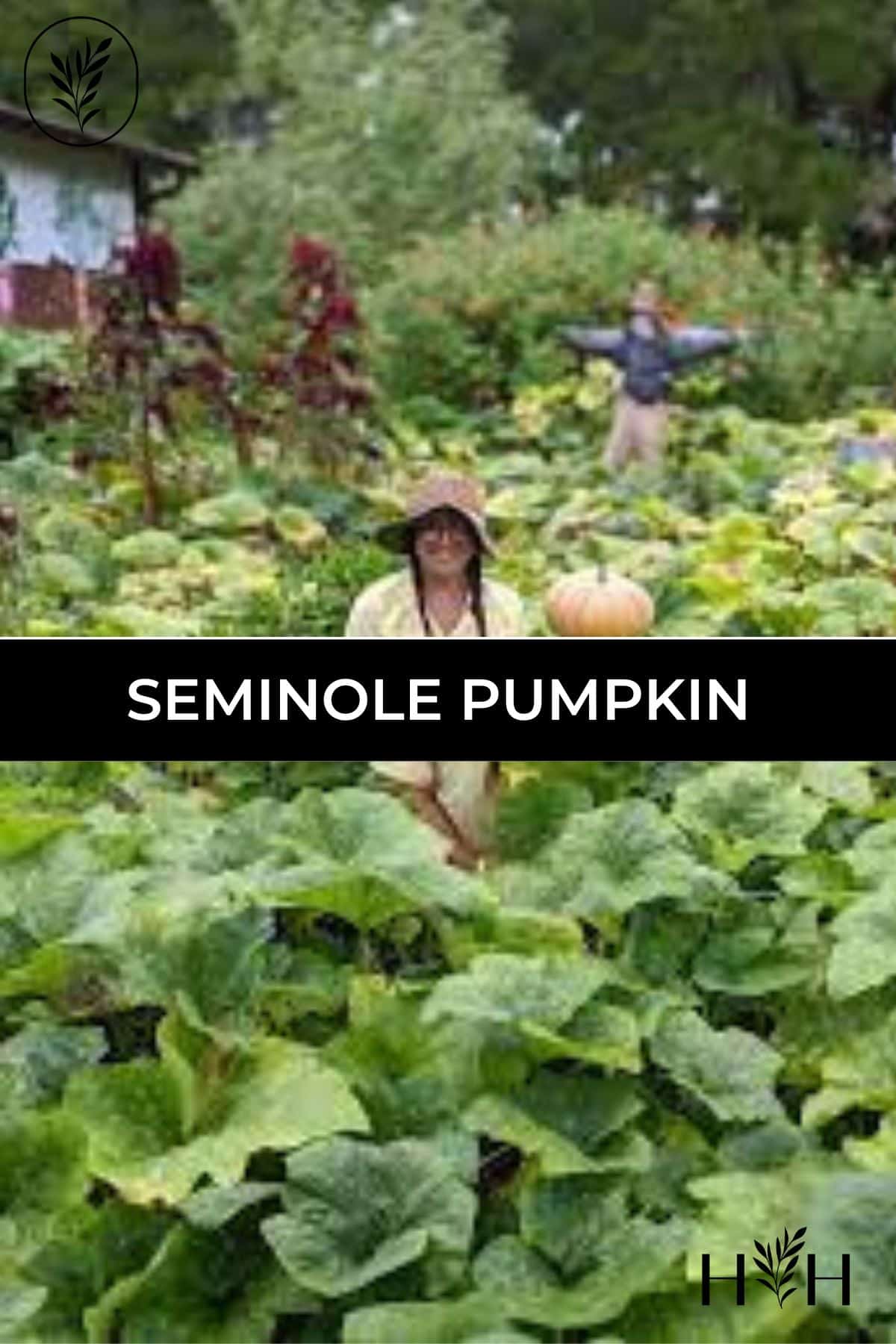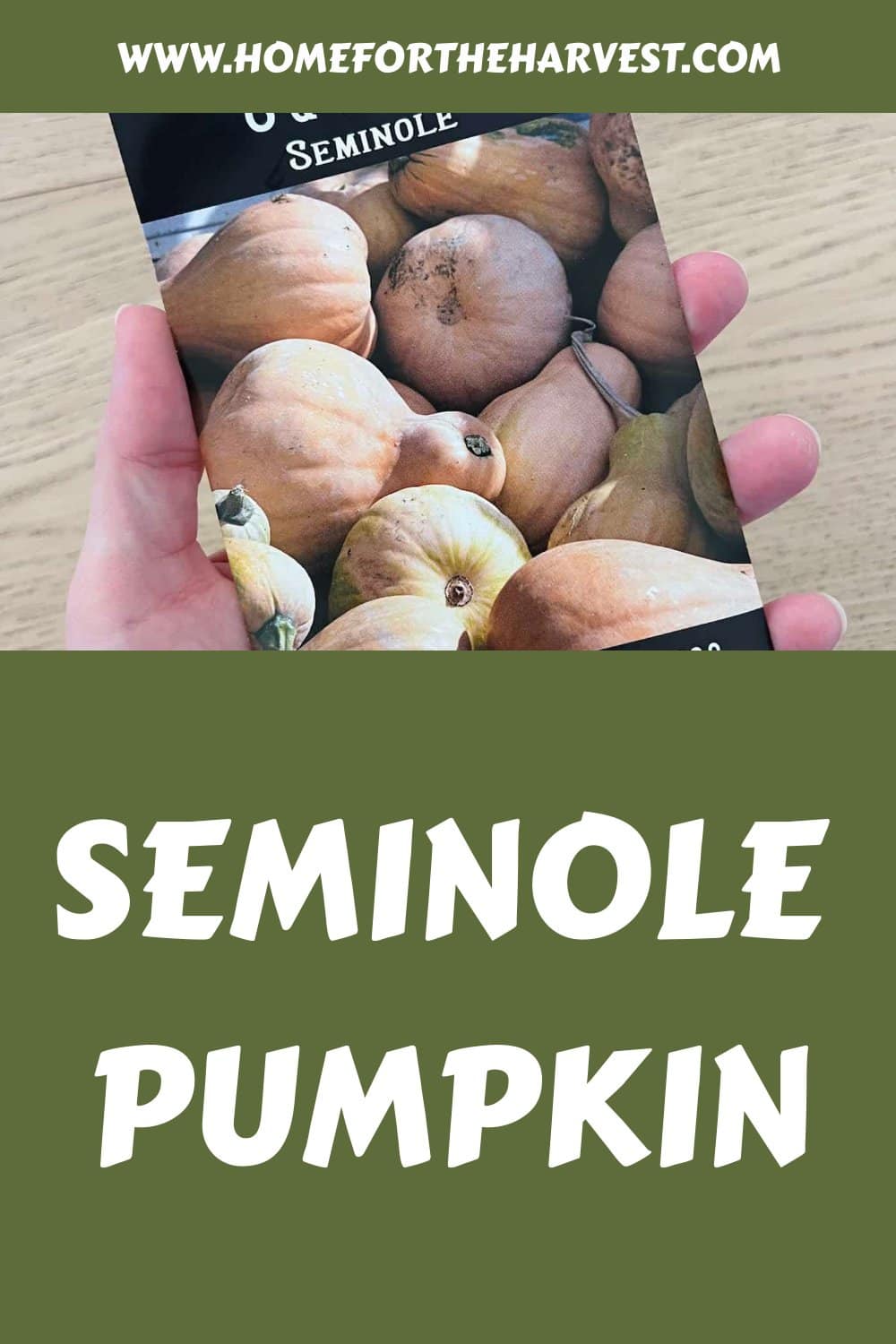It can be difficult to find fruits and vegetables that will grow in particularly harsh, hot, and humid conditions. However, the Seminole pumpkin is a plant that does exceptionally well in such climates.
The Seminole pumpkin is a rich, sweet heirloom pumpkin cultivar native to the Everglades in Florida. The tough rind allows the pumpkin to endure hot, humid conditions and allows the gourd to be stored for extended periods. Originally grown by the indigenous peoples of Florida, it’s now a wonderful plant for Floridian gardens throughout the warmer months.
Read on to learn all about Seminole pumpkins!
Seminole pumpkin basics
Seminole pumpkins are native to the Everglades in Southern Florida. Botanically, this pumpkin is a species Cucurbita moschata, and is part of the Tropical Group of pumpkins.
These heirloom plants were originally cultivated by the Creek, Calusa, and Miccosukee Native American tribes, known as the Seminole people, as an important source of food. Seminole pumpkins remain a top choice in Florida for their tolerance to heat and humid conditions.
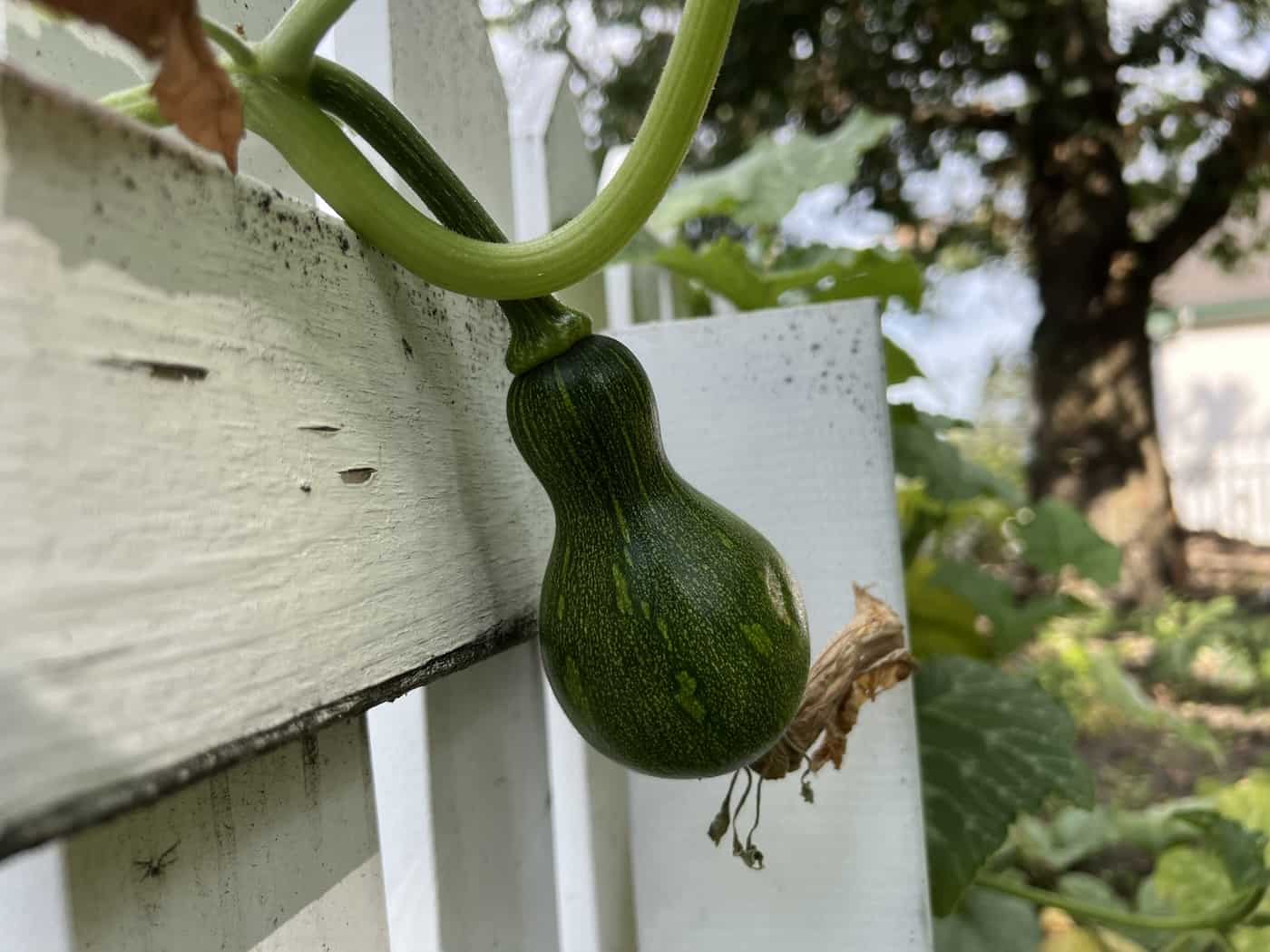
Seminole pumpkins tend to vary in shape quite a bit due to the growing conditions they experience. Some Seminole pumpkins are round, while others are pear-shaped (similar to butternut squash) or even peanut-shaped.
Some can be as small as 3 pounds, while other individual fruits can weigh up to 10 pounds. They can therefore be a wide range of weights (and also shapes – from elongated to teardrop-shaped). The rind is a pale tan color, and the interior flesh is a deep orange.
The Seminole people referred to this pear-shaped squash as the name “Chassahowitza,” meaning “pumpkin hanging place” or “land of hanging pumpkins”. While wild Seminole pumpkins are now rare, the Chassahowitzka River bears the name as a reminder of the wild pumpkins that once grew on the banks.
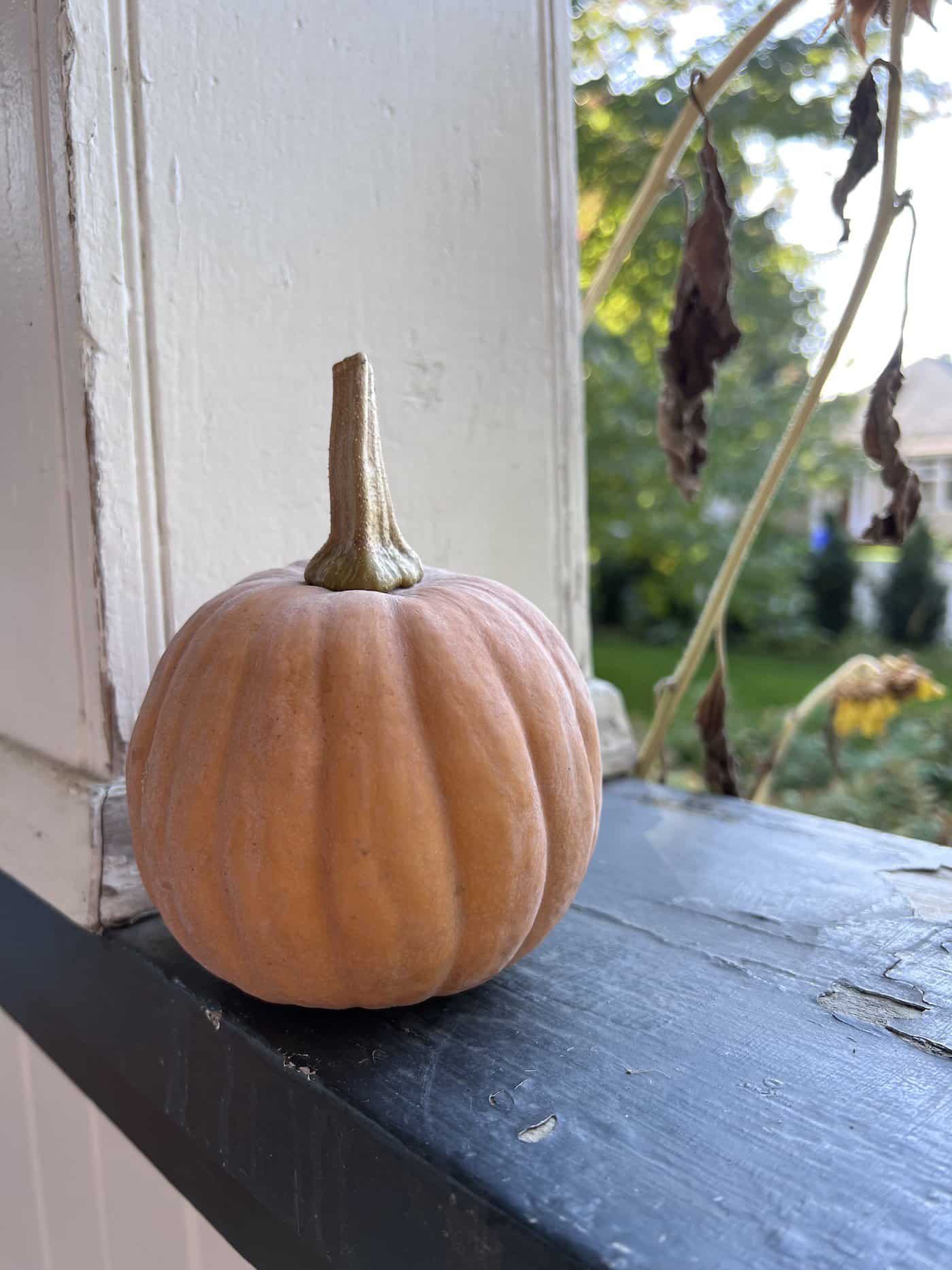
Due to the wet, humid grounds in the Everglades, the indigenous people were not able to store their food in the ground like in other parts of the US.
This caused the Seminole people to use trees to hang the pumpkins so that they would not rot or spoil. To this day, Seminole pumpkins are either grown on the base of a tree or in trellises to keep the vines, vegetables, and flowers from rotting.
“The Seminole Indians, growers of the semidomesticated tropical pumpkin (C. moschata) that now bears their name, knew from experience to keep their pumpkins high and dry. Dr. John Gifford, a former forestry professor at the University of Miami, witnessed how, in the early 1900’s, the Seminoles planted pumpkins at the base of trees they had deadened; the pumpkins then followed their natural inclination.”
The Compleat Squash: A Passionate Grower’s Guide to Pumpkins, Squash, and Gourds, By Amy Goldman
“The Seminole Pumpkin is native to South Florida, USA, where it grew wild and was cultivated by Florida aborigines and later by Miccosukees, Muskogees, and early European settlers. Naturalists record the conspicuous presence of Seminole Pumpkin fruits hanging from tree limbs during their travels to Florida already in the 18th century.”
Seminole Pumpkin, Cucurbita moschata, Echo Community
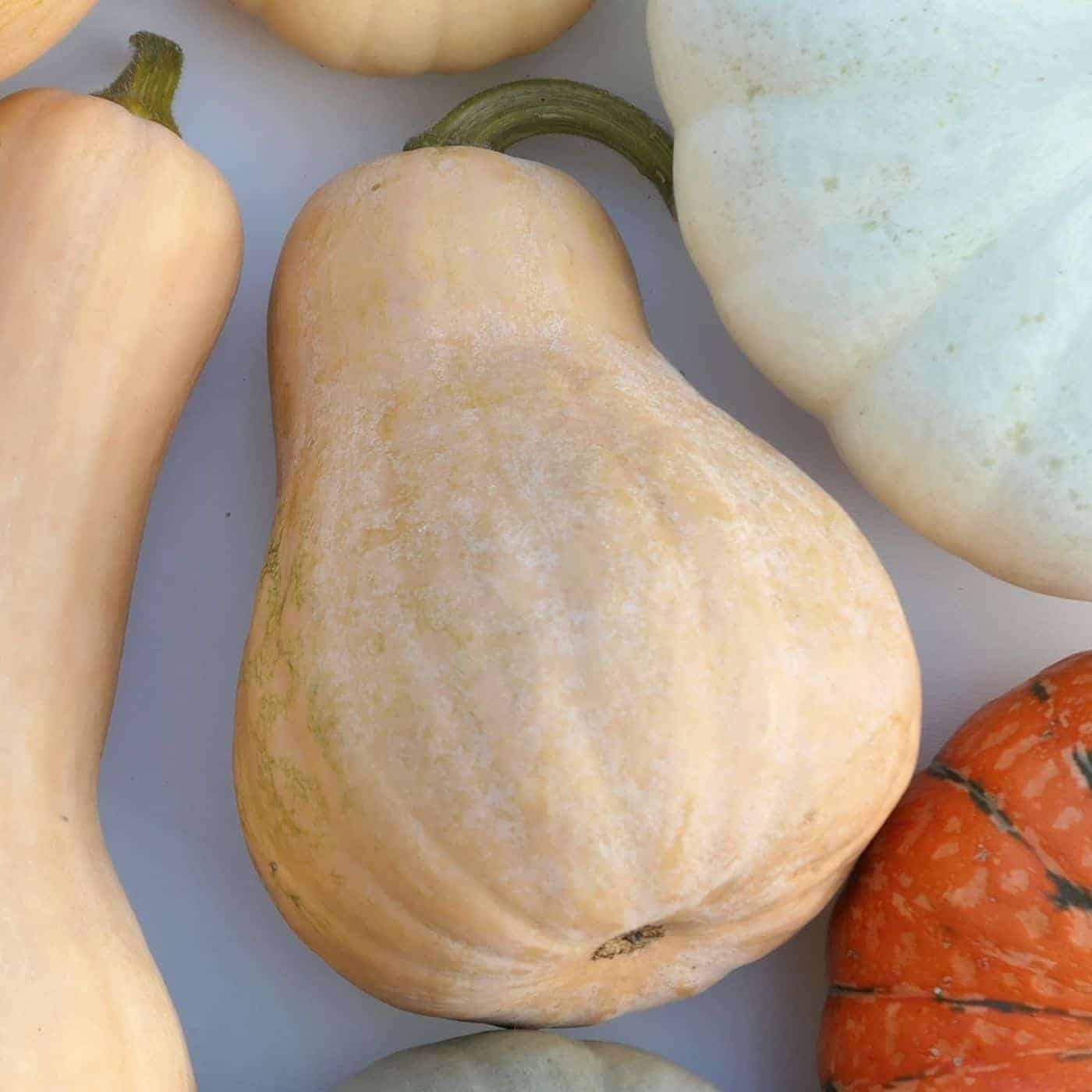
Characteristics of Seminole pumpkins
The Seminole pumpkins come in a variety of shapes, colors, and sizes. They can range from a pear shape to a spherical shape with a light tan, dull orange, or even dark green color (depending on the age of the fruit).
The many variations of Seminole pumpkins developed as a result of cross-pollination from other vegetables of the same family or from the way that the pumpkin was grown.
If the vines were hanging as the pumpkin grew, it might resemble a pear shape but if the vines stayed on the ground while growing, the pumpkin is more likely to resemble a spherical shape.
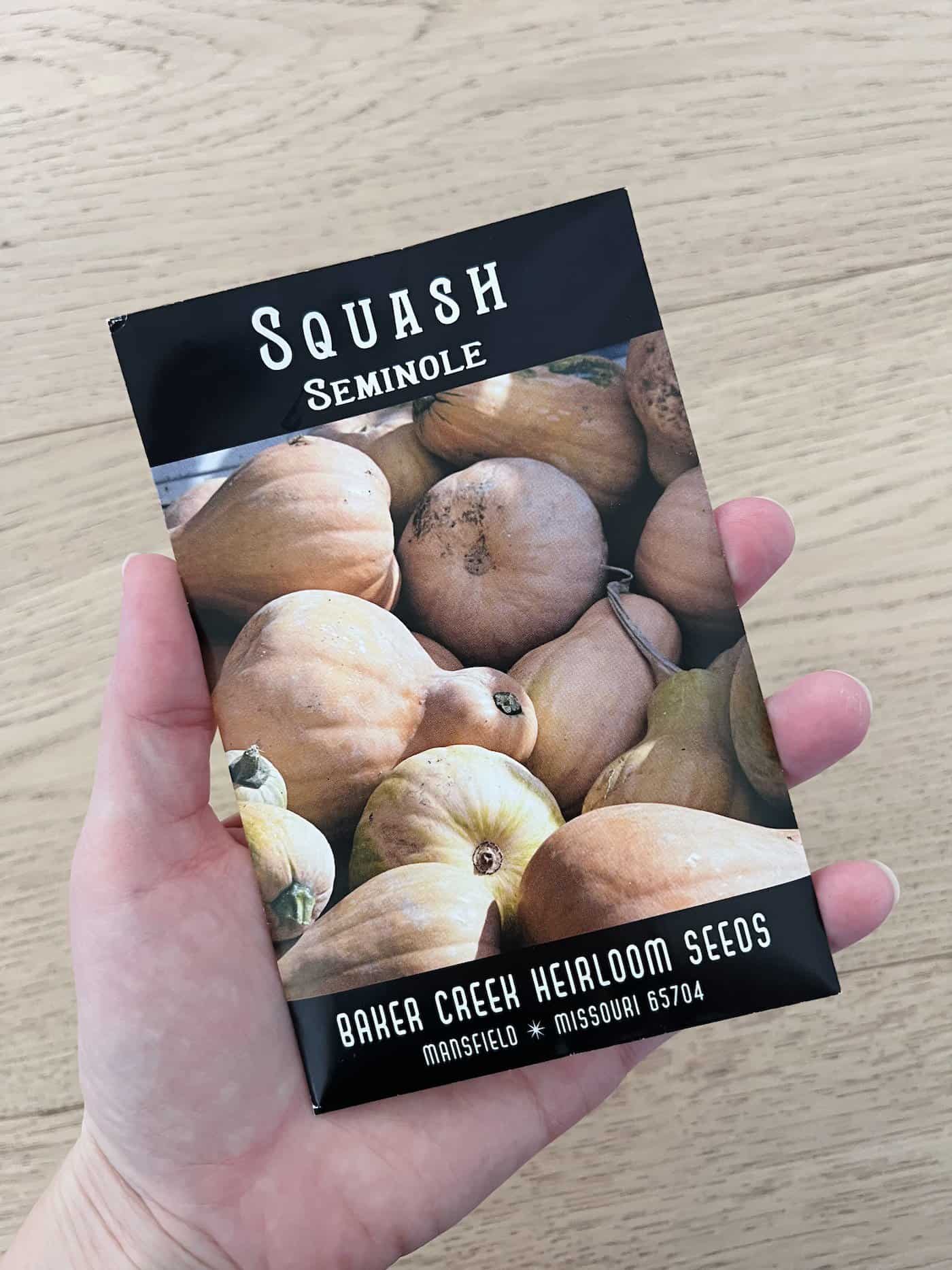
Although there are many variations of the pumpkin’s appearance, there is one thing that all Seminole pumpkins have in common: they all have an extremely tough rind. These rinds can be so tough that it takes an axe to cut through the rind to expose the sweet, deep orange flesh.
This is definitely not the type of pumpkin used for Jack-o-Lantern carving (unless you want to use an ax to do it!). The tough rind allows the plant to grow successfully in the harsh conditions of Florida.
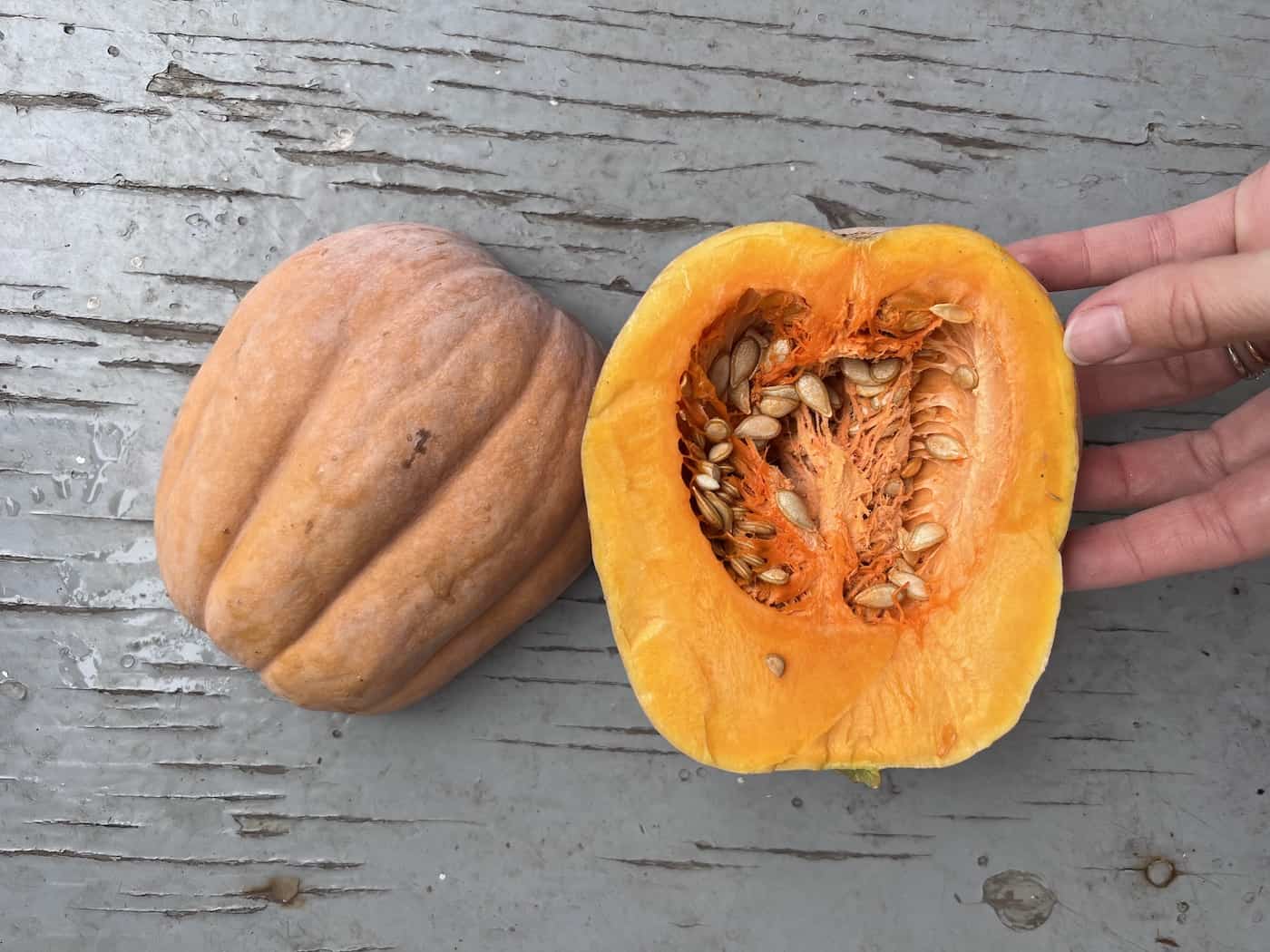
Cooking with Seminole pumpkins
Inside the tough rind is the sweet, deep orange flesh. The flavor is as sweet or even sweeter than butternut squash. This makes the flesh of the Seminole pumpkin a great additive to many autumnal dishes.
Not only is the pumpkin edible, but the flowers on its vines are also used for many dishes. This type of pumpkin is generally roasted in small cubes for use in savory dishes or pureed to make a sweet gourmet pumpkin puree.
To make roasted pumpkin cubes, cut the pumpkin while it is raw. Small 1/2″ cubes can be coated in oil and sprinkled with salt, before roasting on a baking sheet in a 375°F oven for about 40 minutes.
To make pureed Seminole pumpkin, roast the pumpkin in halves. Place the halves cut-side-down on a baking sheet lined with parchment or a silicone sheet. Roast for about 50 minutes, or until tender. Once cool, scoop out the cooked flesh.
Puree with a food processor, Vitamix, or immersion blender, until the puree is creamy and smooth. The flesh can be a bit dry and might require the addition of a bit of water to blend properly.
“Halve a Seminole and bake it, face down, in a 425-degree Fahrenheit oven for a half hour or so, and you’ve got the treat of a lifetime. Seminole pumpkin bread, more like a fritter or empanada, is still served at Seminole and Miccosukee powwows and festivals.”
The Compleat Squash: A Passionate Grower’s Guide to Pumpkins, Squash, and Gourds, By Amy Goldman
“Seminole: Looks like a butternut squash in both shape and color. First found growing wild in the Everglades. Its hearty, deep orange, dry flesh makes it good for roasting, mashing, and baking.”
Purely Pumpkin: More Than 100 Seasonal Recipes to Share, Savor, and Warm Your Kitchen, by Allison Day
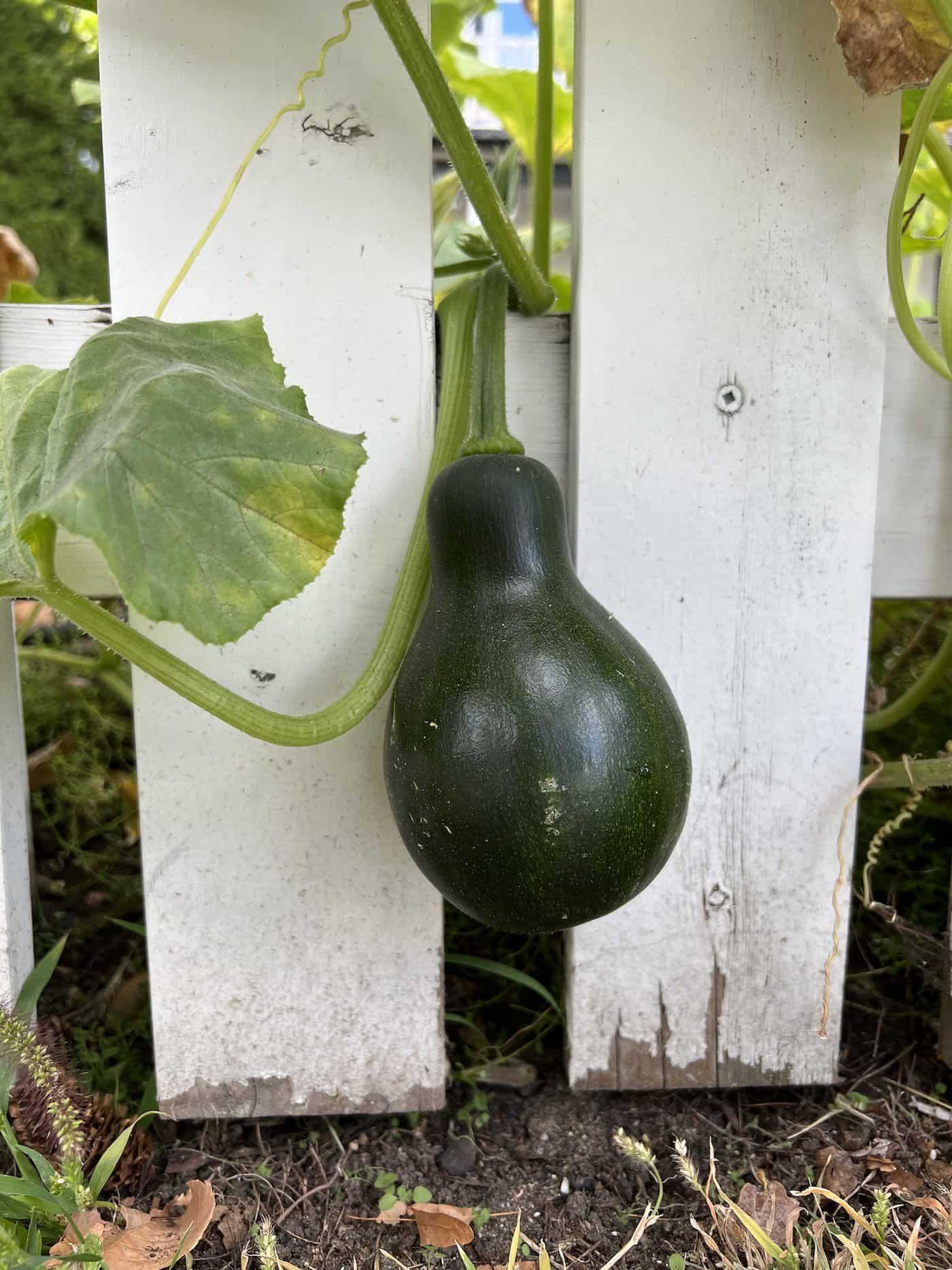
Growing Seminole pumpkins
Locations that are hot and humid are ideal for growing Seminole pumpkins since they are native to Southern Florida. In Florida, this variety of pumpkins can be grown during most times of the year. The plants only struggle as temperatures get downright chilly or over a hundred degrees.
Before sowing the Seminole pumpkin seeds, it is important to find a location that gets six to eight hours of sunlight each day. Too much shade can hinder the pumpkin’s growth, especially since Seminole pumpkins thrive on heat.
You can also choose a location up against the base of a tree, or you can use a trellis to allow the vines to grow. These vining pumpkins are traditionally grown as hanging pumpkins, especially in moist areas.
Once you have your location ready, create mounds that are about eight to twelve inches tall, then place the seeds about half an inch or one inch deep into the ground.
Add about three to four seeds per hill. Be sure to allow some space between the seeds, about 5 to 6 feet, because the vines of Seminole pumpkins can grow to about thirty feet long.
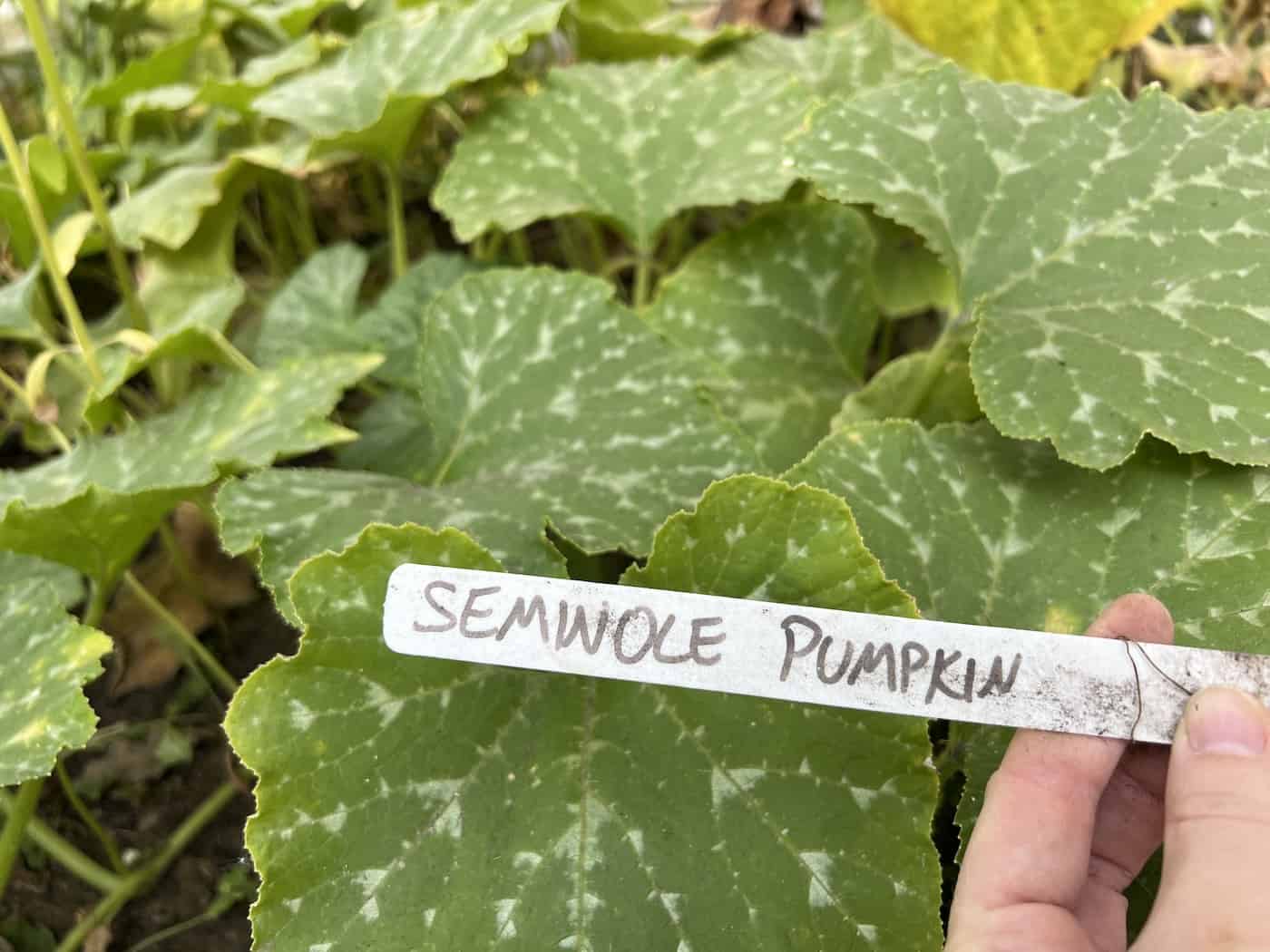
Caring for Seminole pumpkin plants
After being sown, the pumpkins require little maintenance if grown in their native area. Otherwise, the plants will need some compost and fertilizer as they grow in a foreign type of soil. Seminole pumpkins are not only tolerant to heat and humidity but also to insects and disease.
Since Seminole pumpkins require their flowers to be pollinated, it’s a good idea to plant some flowers nearby to attract bees over to the pumpkin’s flowers. As the plant starts to flower in the summertime, you may notice tired bees sleeping in the squash blossoms!
The later the seeds are planted in the season (say, August or July), the more likely the gardener will have to check the leaves for pests. Certain pests, such as squash bugs, are generally not detrimental to the Seminole pumpkin plant. However, caterpillars will eat the foliage, so monitoring leaves when planting late in the season is crucial.
Seminole pumpkins take a long time to reach full ripeness, with an estimated time to maturity of 125 days. Expect them to stay a dark green color for months before they ripen on the vine.
Harvesting Seminole pumpkins
Once the Seminole pumpkins are orange in color, they are ready to harvest. Avoid harvesting green fruits if you’d like them to store well.
These pumpkins are also known to last for a long time due to their thick exterior. Well-ripened pumpkins stored in a cool, well-ventilated area can last anywhere between six to twelve months with no effect on the taste or quality.


